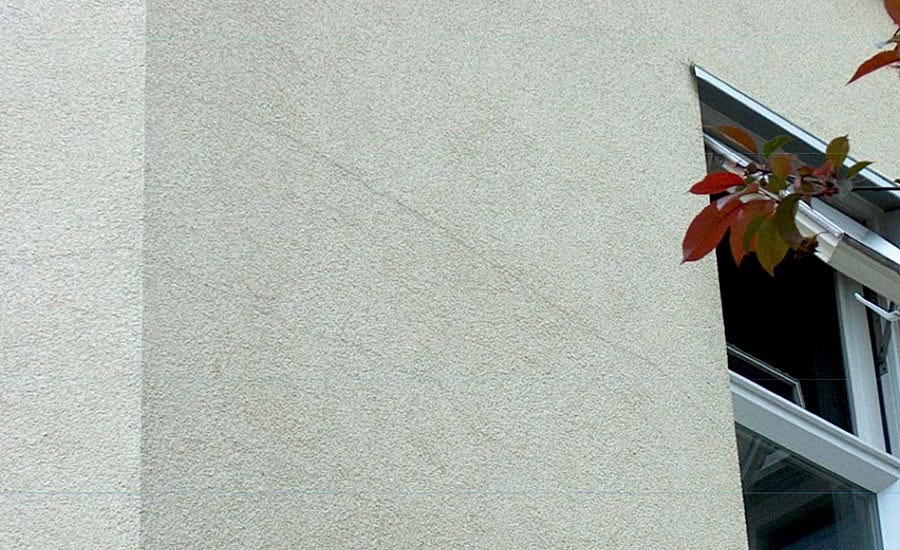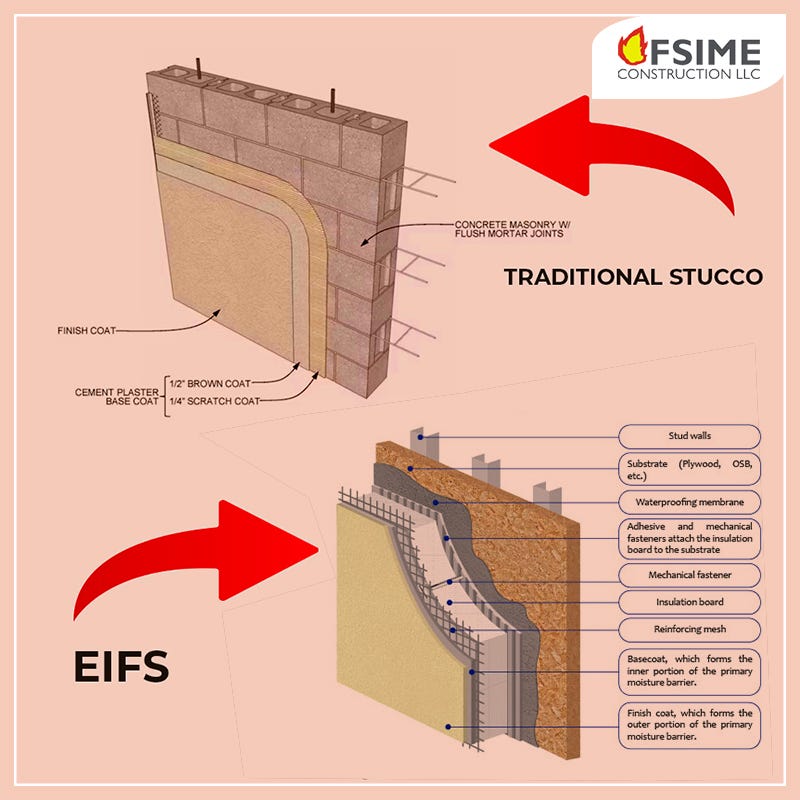Stucco and EIFS (Exterior Insulation and Finish System) are two distinct types of exterior wall cladding systems. While they may appear similar, they differ significantly in composition, application, performance, and cost. Here's a detailed comparison:
Composition
Stucco: Made from Portland cement, sand, lime, and water; applied in multiple thick layers over metal lath.
EIFS: A multi-layer system with rigid foam insulation, fiberglass mesh, and acrylic-based finishes.
Weight
Stucco: Heavier due to its cement-based composition.
EIFS: 80% lighter than stucco due to foam insulation.
Installation
Stucco: Applied in a three-coat process over a wire mesh or lath.
EIFS: Installed in multiple layers over sheathing with foam insulation and mesh reinforcement.
Durability
Stucco: Extremely durable, impact-resistant, and long-lasting; minor cracks may occur but are repairable.
EIFS: Durable but more vulnerable to impact damage and moisture intrusion if not installed properly.
Moisture Management
Stucco: Naturally vapor permeable, allowing moisture vapor to escape; less prone to water damage.
EIFS: Relies on a water-resistant barrier; improper detailing can trap moisture inside the wall system.
Insulation (R-Value)
Stucco: Minimal insulation value (R-0.2); primarily used for structural strength and aesthetics.
EIFS: High insulation value (R-4 to R-12), providing energy efficiency benefits.
Aesthetic Options
Stucco: Offers natural textures and finishes; ideal for traditional or rustic styles.
EIFS: Wide range of textures and colors; can mimic stucco while achieving smoother finishes.
Cost
Stucco: $6–$9 per square foot for materials and labor; requires skilled labor for application.
EIFS: $5–$11 per square foot; faster installation reduces labor costs but requires precision.
Summary
Choose stucco for durability, vapor permeability and fire resistance.
Opt for EIFS if energy efficiency, or lightweight construction are priorities.





